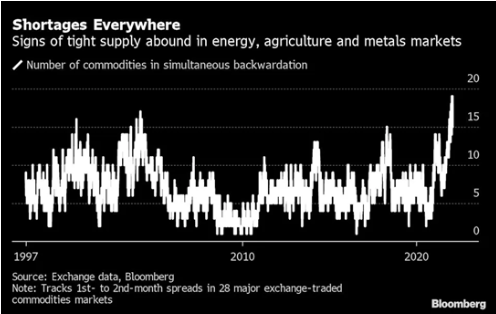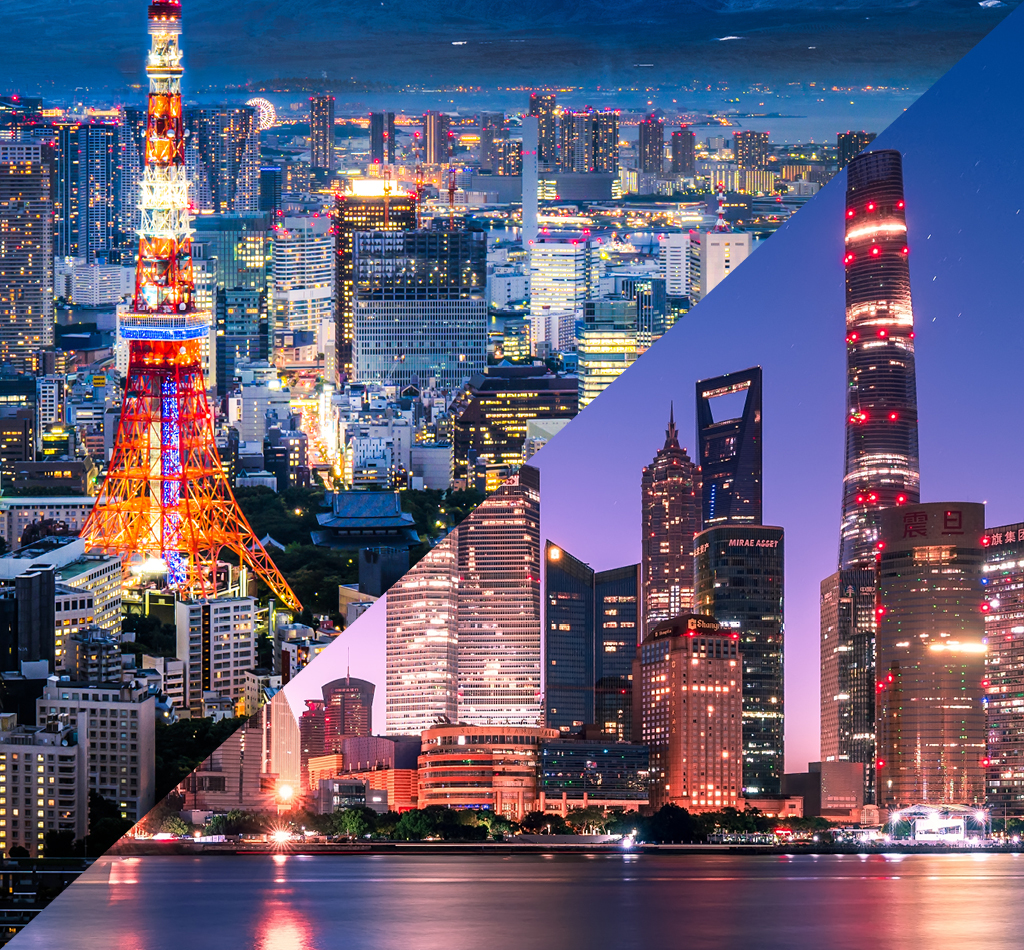Commentary
Energy as a secular trend
February 24, 2022
Dear Clients and Colleagues:
As the world transitions to green energy over the next 30 years, China must find short-term alternatives to their coal thermal plant problem, which represents 18% of total global carbon dioxide (CO2) emissions. 1
While it may seem like a contrary solution, China sees gas-fired power as the most realistic transitory solution until greener and grid friendly alternatives take scale. Gas has lower emissions than coal (50% less, oil is 25% less) and gas is more flexible than solar, wind, and even pumped-storage hydropower. It seems that China wants to import natural gas as fast as pipeline and LNG infrastructure is built. China’s pipeline gas volume surged 154.2% in 2021, to 7.54 million metric tons (mt). Natural gas imports (LNG) from Russia rose 50.5% year-over-year in 2021.2 Meanwhile, China LNG imports from the United States (U.S.) saw the biggest year-over-year jump, rising 187.4% to 9.21 million mt in 2021.3
According to GlobalData, LNG liquefaction capacity is expected to grow by 70% over the next four years.3 China will add as much as 21.5 million mt/year of LNG receiving capacity in 2022, this from more than the 14 million mt/year added in 2021 for a total import capacity of 127 mt/year in 2022.1 Japan pioeneered LNG 60 years ago and recently fell in second place in terms of activity with 75 mt/year of LNG imports.4
Although the Chinese LNG import growth only absorbes world gas production by less than 1%, it is enough to pressure pricing upwards, especially since Europe and other regions try to curb thermal coal as well. Supply side dynamics are not helping either, as world rig counts are 45% lower than in 2015.5 Why so few? Oil and gas companies are shuffling with higher exploration costs, regulations and low labor availability.
Coming back to Japan, the country has low internal energy resources and imports 90% of its energy requirements. An important part of the country’s electrification is fuelled with LNG imports. Japan has the largest LNG capacity with 227 mt/year.4 As part of its CO2 emission targets, the country is trending towards a hydrogen strategy fuelled by renewables while reducing its LNG imports and nuclear power.
Iwatani (8088:JT)
Global Alpha owns Iwatani, the largest provider of LPG liquified propane gas, from importing to stove tanks. Iwatani provides an essential service throughout Japan, a country with very low penetration of utility style gas piping to the house. Although Japan’s LNG imports for electrification will decline, LPG will continue to be a key part of Japanese culture for cooking and heating especially in rural settings. Iwatani is also Japan’s only fully integrated supplier of hydrogen, with a nationwide network, including manufacturing, transportation, storage, supply, and security. It had 53 hydrogen stations in Japan as of 2021. Plans are to add 270 by 2030.
With plans to start exports by 2025, the west coast of Canada is set to benefit from the Asian LNG expansion. The energy shipped from Canada over to Asia is expected to offset up to 90 million tonnes of CO2 emissions in a single year. This is equivalent to shutting down 40 to 60 coal fired plants in China.7
ARC Resources (ARX:TSE)
Global Alpha owns ARC Resources, a Canadian energy company with operations focused in the Montney Resource Play in Alberta and northeast British Columbia. The company is best positioned with its gas assets to supply LNG requirements for Asian LNG exports. ARX is an industry leaders in terms of ESG with many initiatives regarding gas flaring and CO2 carbon capture.
Clean Energy Fuels (CLNE:US)
North American natural gas usage is also expected to increase in renewable growth as it is mixed with captured methane producing negative CO2 emission. For this Global Alpha owns Clean Energy Fuels, the largest network of retail natural gas distribution in the country.
China’s need for energy to fuel cars and electrify houses (and give them some benefit, to reduce thermal coal) has forced them to shut down many internally produced commodities that demand high energy consumptions (as well as high CO2 emission) notably aluminium and copper smelters. China still needs these commodities and has reverted to the global trade market. If we add the change in habits brought on by COVID-19 that supported a rush for hard goods during the pandemic, this is the consequence.

With a high energy production input, shipping aluminum is basically shipping energy.
Alumina (AWC:AU)
Global Alpha owns Australia’s Alumina, which owns 40% of the world’s largest alumina business, Alcoa World Alumina and Chemicals (AWAC), the recognized industry leader. Precursor to aluminum, the metal powder alumina is refined from bauxite. AWC owns alumina refineries, bauxite mines and aluminum refineries globally with a good concentration in Australia. Close to China, AWC Australia large operations present the lowest cost import option for China. As well, AWC sources all of its energy requirements from natural gas. AWC also has important ESG initiatives such as Mechanical Vapor Recompression (MVR) which turns waste vapor into steam.
If we consider the energy transition to renewables as a secular event, the trend has certainly affected commodity prices in addition to more typical demand and supply forces.
Have a nice week.
The Global Alpha team
1 https://www.statista.com/statistics/239093/co2-emissions-in-china/#:~:text=China%20released%2010.67%20billion%20metric,of%20countries%20where%20emissions%20increased
2 https://www.spglobal.com/platts/en/market-insights/latest-news/lng/012022-china-data-total-natural-gas-imports-rose-20-in-2021-on-strong-energy-demand
4 https://www.statista.com/statistics/1285639/japan-share-lng-in-energy-production/
5 https://rigcount.bakerhughes.com/intl-rig-count
7 https://biv.com/article/2022/01/lng-canada-project-construction-kicking-high-gear
This report is provided solely for informational purposes and nothing in this document constitutes an offer or a solicitation of an offer to purchase any security. This report has no regard to the specific investment objectives, financial situation or particular needs of any specific recipient and does not constitute a representation that any investment strategy is suitable or appropriate to a recipient’s individual circumstances. Global Alpha Capital Management Ltd. (Global Alpha) in no case directly or implicitly guarantees the future value of securities mentioned in this document. The opinions expressed herein are based on Global Alpha’s analysis as at the date of this report, and any opinions, projections or estimates may be changed without notice. Global Alpha, its affiliates, directors, officers and employees may sell or hold a position in securities of a company(ies) mentioned herein. The particulars contained herein were obtained from sources, which Global Alpha believes to be reliable but Global Alpha makes no representation or warranty as to the completeness or accuracy of the information contained herein and accepts no responsibility or liability for loss or damage arising from the receipt or use of this document or its contents.
Source: MSCI. The MSCI information may only be used for your internal use, may not be reproduced or redisseminated in any form and may not be used as a basis for or a component of any financial instruments or products or indices. MSCI makes no express or implied warranties or implied warranties or representations and shall have no liability whatsoever with respect to any MSCI data contained herein. This report is not approved, reviewed or produced by MSCI.







